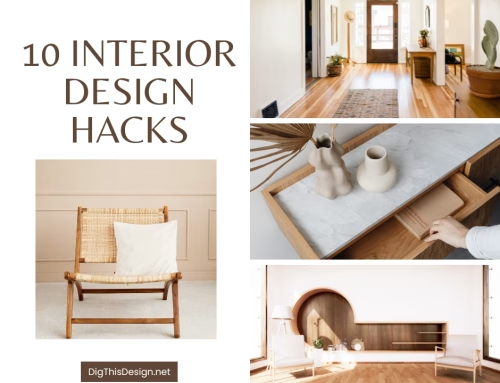As you get ready to start your home DIY project, it can seem a bit overwhelming as you struggle to get all the supplies and tools together and figure out how much time you will need to complete the process. Organizing your DIY project can save you a lot of stress, money, and even time, making the project run much smoother.
Here are some tips you can use that will help you get your DIY project organized:
5 Tips to Organize Your DIY Project

Get it Down on Paper
Do you remember the quote by Benjamin Franklin: “If you fail to plan, you are planning to fail!” Part of the disorganization comes from forgetting things you need to do, pick up, or even failing to plan the correct order to go about the project. This is exactly why it is helpful to write the plan down on paper. Create a list of supplies you will need, the tools you need, the order in which tasks need to be completed, and a timeline. Once you’ve got it down on paper, it becomes very easy to go about the project and there should be less confusion.
Make a Decision and Stick with It
If you’re the type of person that is constantly changing your mind, it’s time to change your ways. Once you’ve got a design plan, you need to stick with it. Changing your mind can result in extra costs and extra work. During the planning stages is when you work through problem-solving, by the time you get to execute the project things should be set in stone.
Do Your Research Ahead of Time
If you’re not usually the DIY type, or this is a project you’ve never done before, it’s a good idea to ask questions before you get started. There may be steps you aren’t aware of, tools you need that you didn’t realize would be required, etc. You can search for how to videos online or visit your local building store for information and advice. As you go about your project, if there comes a point where you feel confused or unsure, it’s best to take a pause and ask for help. Forging ahead without knowing what you’re doing can lead to disaster.
Prepare Your Floors
With most DIY projects, you’ll need to bring pretty large, often heavy materials into the home. All it takes is a little slip to drop something on the floor resulting in damage to your existing flooring. If you don’t plan on replacing your flooring as part of the project, then you need to invest in floor protection. This will protect your floor from scratches, chips, spills, and rips.
Give Yourself Extra Space to Work
There is nothing more frustrating than having to work in a cramped and tiny space. It’s a good idea to move furniture out of the room, or at least out of the way while you work. Decluttering and storing things in bins and boxes in another room may also be necessary. This will give you the space you need to get the job done properly, and it will help protect the furniture since it won’t be in the way. And if you can’t move it, remember it’s always a good idea to cover all your furniture to protect it from spills and stains.
While a DIY project is bound to have its share of ups and downs, you can certainly help things to be much smoother by taking the time to organize.
Images Courtesy of Canva.
Other posts you might enjoy:
How to Successfully Complete a DIY Project
Easy DIY Ideas to Spruce Up Your Home





